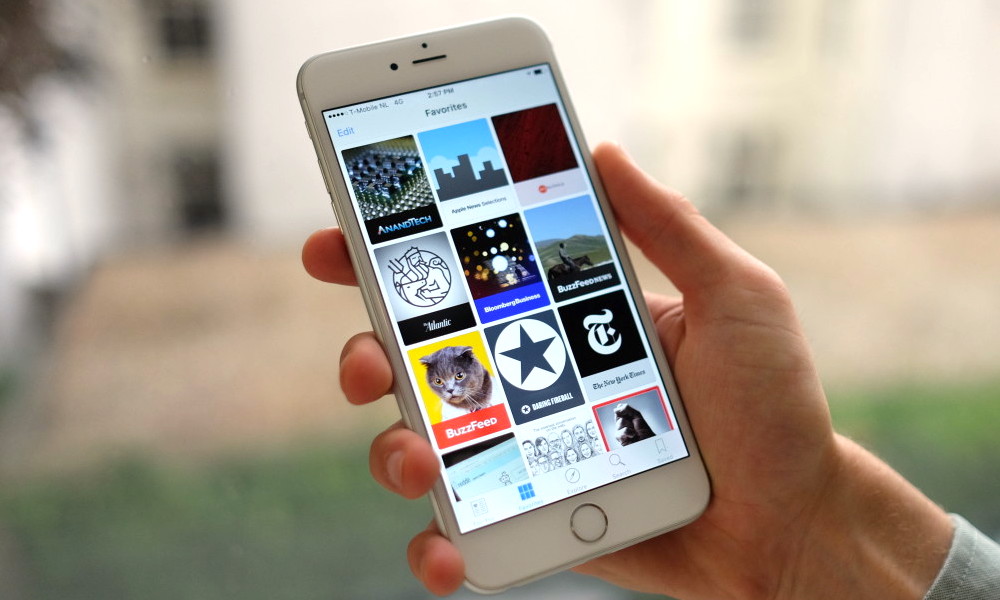Apple Demands 50% Rev. Cut for Premium News Service, Struggles to Gain Major Publishers
 Credit: TNW
Credit: TNW
Toggle Dark Mode
Although it appears Apple is finally taking the wraps off its premium subscription news service next month, a recent report has raised questions about how much success the company will have in getting major publishers on board in time for the launch.
News broke yesterday that Apple is planning a surprise event on March 25 that’s reported to be focused on the subscription-based news service that the company has allegedly been working on since early last year, shortly after its acquisition of the online magazine platform Texture. While there have been suggestions that Apple’s premium news service will include content from major media outlets like The New York Times, The Washington Post, and The Wall Street Journal, it seems that Apple may be scaring away some large publishers with its insistence on large revenue cuts and subscriber privacy.
According to The Wall Street Journal, the company has had difficulty striking deals due to its demand for a 50 percent cut of the subscription revenue from the service, which is expected to offer access to an unlimited amount of content from participating publishers for a fixed monthly fee, sort of like a “Netflix for news.”
According to what Apple has told publishers, the service is expected to be priced at around $10 per month, similar to Apple Music, although sources indicate that this figure has not yet been finalized. However, regardless of the monthly fee, the business model that Apple is proposing would see the iPhone maker take 50 percent off the top of all subscriptions before dividing the remaining revenue proportionally among participating publishers, based on the time that users spend reading their articles.
The WSJ notes that, due at least partly to these terms, major outlets expected to be on board, such as The New York Times and The Washington Post, have not yet agreed to license their content to the service. Sources familiar with the talks also noted that these terms had not been previously disclosed, although talks are still ongoing, suggesting an eleventh-hour deal could still be reached.
The Wall Street Journal notes that it also has concerns, but adds that “its recent conversations with Apple have been productive,” according to people familiar with the matter, although it sounds like the publisher has not yet reached a final agreement with Apple either.
Sources also suggest that some publishers also continue to raise concerns about access to subscriber data — an issue that came up when Apple introduced its now-defunct Newsstand platform several years ago. Direct subscriptions allow publishers to collect credit card information and email addresses that allow them to build their own customer databases, however Apple’s privacy policies preclude the company from sharing this data with developers or publishers. Although the same approach also frustrates traditional app developers, it’s a more difficult pill to swallow for many in the publishing industry, who have become accustomed to having subscriber lists available for research, demographics, and marketing purposes.
Even aside from the steep cut that Apple wants to take, however, the WSJ adds that many large publishers are also afraid of an “a la carte” Apple News subscription service cannibalizing their own sales. Big players like The New York Times and The Wall Street Journal already charge more for individual subscriptions than Apple is proposing for its own subscription service. A basic monthly subscription to the Times costs $15, while the WSJ charges a whopping $39/month, so it’s easy to see how Apple may have a hard sell convincing these publications to be content with their share of even a full $10 monthly subscription, much less the $5 per subscriber that would remain after Apple takes its cut.
Apple’s pitch, however, is that Apple News will give these publications a chance to dramatically expand their customer base by offering more exposure and easy subscriptions through an app that comes standard on every iPhone, iPad, and Mac, and offers a level of curation and customization that most of the publishers’ own apps don’t even come close to. Further, there’s also the more obvious matter of attracting new readers who would never consider paying $39/month for a subscription to a single publication, but have no problem paying for a flat-rate subscription service that provides access to a variety of publications.
Many major outlets, including the Times, the Post, and the WSJ, already make some of their content freely available on Apple News, and are able to keep 100% of the revenue that they make from ads that they sell themselves, and 70% of the revenue from other ads that appear alongside their articles. Apple also allows users to subscribe to these publications through Apple News, taking only its standard 30% cut of subscription revenue for the first year, and 15% in subsequent years. Apple’s subscription service, however, would propose to make almost all of the content from major outlets available, including that which normally hides behind paywalls, effectively eliminating the need for direct subscriptions. While the report doesn’t make it entirely clear, it’s a safe assumption, however, that publishers would be able to continue selling and running their own ads for their articles, which has the potential to be a much larger source of revenue if Apple can deliver on its promise of exponentially expanding their readership.






